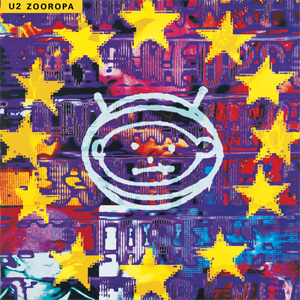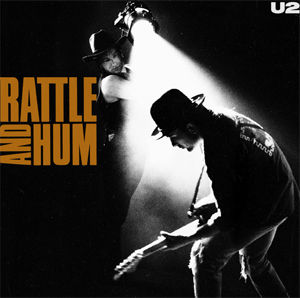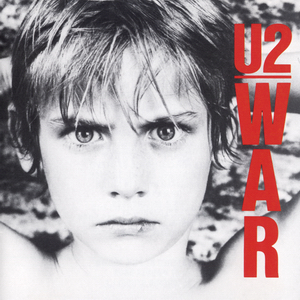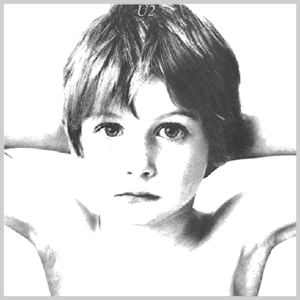best U2 songs (A-Z) ↓↓↓

Scroll down and discover the best U2 songs (A-Z)!
We've meticulously organized our extensive library for your convenience. Explore best U2 songs sorted by popularity to easily find the tracks that resonate most with listeners, or browse through our alphabetical (A-Z) listing to discover hidden gems and classic favorites alike. Whether you’re a long-time fan or new to U2 music, there’s something for everyone to enjoy.
♫U2
Best U2 songs
- 1 With Or Without You
- 2 Sunday Bloody Sunday
- 3 One
- 4 Beautiful Day
- 5 Where The Streets Have No Name
- 6 I Still Haven’t Found What I’m Looking For
- 7 Gloria
- 8 Bad
- 9 Miss Sarajevo
- 10 New Year’s Day
- 11 All I Want Is You
- 12 A Man And A Woman
- 13 Babyface
- 14 A Celebration
- 15 Christmas (baby, Please Come Home)
- 16 Pride (in The Name Of Love)
- 17 Vertigo
- 18 Angel Of Harlem
- 19 Elevation
- 20 Desire
- 21 40
- 22 Stuck In A Moment You Cant Get Out Of
- 23 I Will Follow
- 24 A Day Without Me
- 25 All Because Of You
- 26 The Sweetest Thing
- 27 11 O’clock Tick Tock
- 28 Mysterious Ways
- 29 Another Day
- 30 Deep In The Heart
A-Z songs of U2 (222)
- ♫ 11 O’clock Tick Tock
- ♫ 40
- ♫ 4th Of July
- ♫ A Celebration
- ♫ A Day Without Me
- ♫ A Different Kind Of Blue
- ♫ A Man And A Woman
- ♫ A Room At The Heartbreak Hotel
- ♫ A Sort Of Homecoming
- ♫ Acrobat
- ♫ All Along The Watchtower
- ♫ All Because Of You
- ♫ All I Want Is You
- ♫ Always
- ♫ Always Forever Now
- ♫ An Cat Dubh
- ♫ Angel Of Harlem
- ♫ Another Day
- ♫ Another Time, Another Place
- ♫ Babyface
- ♫ Bad
- ♫ Bang A Gong (get It On)
- ♫ Bass Trap
- ♫ Be There
- ♫ Beach Sequence
- ♫ Beat On The Brat
- ♫ Beautiful Day
- ♫ Beautiful Ghost / Introduction To Songs Of Experience
- ♫ Because The Night
- ♫ Big Girls Are Best
- ♫ Blow Your House Down (version 1)
- ♫ Blow Your House Down (version 2)
- ♫ Book Of Your Heart
- ♫ Boomerang Ll
- ♫ Boy—girl
- ♫ Boy/girl
- ♫ Breathe
- ♫ Bullet The Blue Sky
- ♫ California (there Is No End To Love)
- ♫ Can’t Help Falling In Love
- ♫ Cartoon World
- ♫ Cedars Of Lebanon
- ♫ Cedarwood Road
- ♫ Christmas (baby, Please Come Home)
- ♫ City Of Blinding Lights
- ♫ Corpse (these Chains Are Way Too Long)
- ♫ Crumbs From Your Table
- ♫ Daddy’s Gonna Pay For Your Crashed Car
- ♫ Dancing Barefoot
- ♫ Deep In The Heart
- ♫ Desert Of Our Love
- ♫ Desire
- ♫ Dirty Day
- ♫ Disappearing Act
- ♫ Discothèque
- ♫ Do You Feel Loved
- ♫ Doctor Doctor
- ♫ Don’t Take Your Guns To Town
- ♫ Drowning Man
- ♫ Drunk Chicken / America
- ♫ Electrical Storm
- ♫ Elevation
- ♫ Elvis Ate America
- ♫ Elvis Presley And America
- ♫ Endless Deep
- ♫ Even Better Than The Real Thing
- ♫ Everlasting Love
- ♫ Every Breaking Wave
- ♫ Everybody Loves A Winner
- ♫ Exit
- ♫ Falling At Your Feet
- ♫ Fast Cars
- ♫ Fez – Being Born
- ♫ Fire
- ♫ Flower Child
- ♫ Fortunate Son
- ♫ Get On Your Boots
- ♫ Get Out Of Your Own Way
- ♫ Gloria
- ♫ God Part Ii
- ♫ Gone
- ♫ Grace
- ♫ Growning Man
- ♫ Hallelujah Here She Comes
- ♫ Hawkmoon 269
- ♫ Heartland
- ♫ Heaven And Hell
- ♫ Helter Skelter
- ♫ Here Comes The Sunset/chances Away
- ♫ Hold Me, Thrill Me, Kiss Me, Kill Me
- ♫ Holy Joe
- ♫ I Fall Down
- ♫ I Feel Free (version 1)
- ♫ I Feel Free (version 2)
- ♫ I Still Haven’t Found What I’m Looking For
- ♫ I Threw A Brick Through A Window
- ♫ I Will Follow
- ♫ I’m Not Your Baby
- ♫ If God Will Send His Angels
- ♫ If You Wear That Velvet Dress
- ♫ In A Little While
- ♫ In God’s Country
- ♫ Indian Summer Sky
- ♫ Inside Out
- ♫ Into The Heart
- ♫ Is That All
- ♫ Kite
- ♫ Lady With The Spinning Head
- ♫ Last Night On Earth
- ♫ Laughing In The Face Of Love/sea Cruel
- ♫ Lemon
- ♫ Like A Song
- ♫ Lost On A Silent Planet
- ♫ Love And Peace Or Else
- ♫ Love Comes Tumbling
- ♫ Love Is Blindness
- ♫ Love Rescue Me
- ♫ Luminous Time
- ♫ Luminous Times (hold On To Love)
- ♫ Miami
- ♫ Miracle Drug
- ♫ Miss Sarajevo
- ♫ Mlk
- ♫ Mofo
- ♫ Mothers Of The Disapeared
- ♫ Mysterious Ways
- ♫ Never Let Me Go
- ♫ New Year’s Day
- ♫ New York
- ♫ Night And Day
- ♫ No Man’s Land
- ♫ Numb
- ♫ October
- ♫ One
- ♫ One Step Closer
- ♫ One Tree Hill
- ♫ Original Of The Species
- ♫ Out Of Control
- ♫ Party Girl
- ♫ Peace On Earth
- ♫ Please
- ♫ Pride (in The Name Of Love)
- ♫ Promenade
- ♫ Red Hill Mining Town
- ♫ Red Light
- ♫ Rejoice
- ♫ Running To Stand Still
- ♫ Salomé
- ♫ Scarlet
- ♫ Seconds
- ♫ Shadows And Tall Trees
- ♫ Silver And Gold
- ♫ Slow Dancing
- ♫ So Cruel
- ♫ Some Days Are Better Than Others
- ♫ Sometimes You Can’t Make It On Your Own
- ♫ Spanish Eyes
- ♫ Stanger In A Strange Land
- ♫ Staring At The Sun
- ♫ Stateless
- ♫ Stay (far Away So Close)
- ♫ Stories For Boys
- ♫ Street Mission
- ♫ Stuck In A Moment You Can Get Out Of
- ♫ Stuck In A Moment You Cant Get Out Of
- ♫ Summer Rain
- ♫ Sunday Bloody Sunday
- ♫ Surrender
- ♫ Sweet Baby Jane
- ♫ Sweetest Thing
- ♫ Sweetest Thing (1998 Single Version)
- ♫ Take Today
- ♫ The Ballad Of Ronnie Drew
- ♫ The Blackout
- ♫ The Crystal Ballroom
- ♫ The Dream Is Over
- ♫ The Electric Co.
- ♫ The First Time
- ♫ The Fly
- ♫ The Fool
- ♫ The Ground Beneath Her Feet
- ♫ The Hands That Built America
- ♫ The Ocean
- ♫ The Playboy Mansion
- ♫ The Refugee
- ♫ The Sweetest Thing
- ♫ The Unforgettable Fire
- ♫ The Wanderer
- ♫ Three Sunrises
- ♫ Tomorrow
- ♫ Touch
- ♫ Trash, Trampoline And The Party Girl
- ♫ Treasure (whatever Happened To Pete The Chop?)
- ♫ Trip Through Your Wires
- ♫ Tryin To Throw Your Arms Around The World
- ♫ Tryin’ To Trow Your Arms Around The World
- ♫ Twilight
- ♫ Two Hearts Beat As One
- ♫ Two Shots Of Happy One Shot Of Bad
- ♫ Ultra Violet
- ♫ Ultra Violet — (light My Way)
- ♫ Until The End Of The World
- ♫ Van Diemen’s Land
- ♫ Vertigo
- ♫ Wake Up Dead Man
- ♫ Walk On
- ♫ Walk To The Water
- ♫ When I Look At The World
- ♫ When Love Comes To Town
- ♫ Where Did It All Go Wrong
- ♫ Where The Streets Have No Name
- ♫ Who’s Gonna Ride Your Wild Horses
- ♫ Who’s Gonna Ride Your Wild Horses (version 1)
- ♫ Whos Gonna Ride Your Wild Horses
- ♫ Wild Honey
- ♫ Wire
- ♫ With A Shout (jerusalem)
- ♫ With Or Without You
- ♫ Yahweh
- ♫ Your Blue Room
- ♫ Zoo Station
- ♫ Zooropa
Albums of U2
-
 Songs of Experience (2017)
Songs of Experience (2017)
-
 Songs of Innocence (2014)
Songs of Innocence (2014)
-
 No Line on the Horizon (2009)
No Line on the Horizon (2009)
-
 How to Dismantle an Atomic Bomb (2004)
How to Dismantle an Atomic Bomb (2004)
-
 All That You Can’t Leave Behind (2000)
All That You Can’t Leave Behind (2000)
-
 Pop (1997)
Pop (1997)
-
 Zooropa (1993)
Zooropa (1993)
-
 Achtung Baby (1991)
Achtung Baby (1991)
-
 Rattle and Hum (1988)
Rattle and Hum (1988)
-
 The Joshua Tree (1987)
The Joshua Tree (1987)
-
 The Unforgettable Fire (1984)
The Unforgettable Fire (1984)
-
 War (1983)
War (1983)
-
 October (1981)
October (1981)
-
 Boy (1980)
Boy (1980)